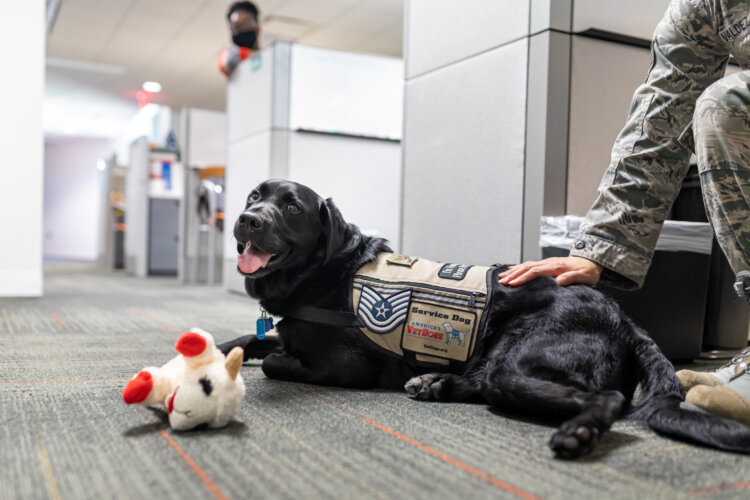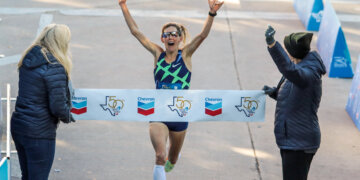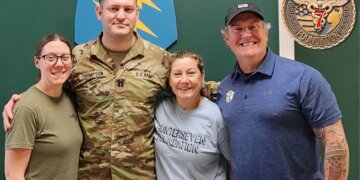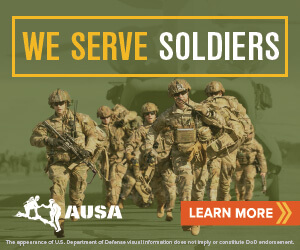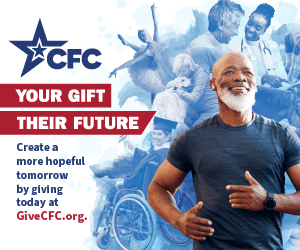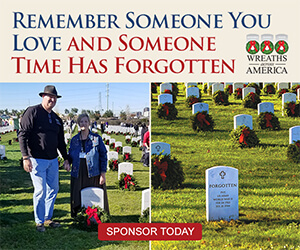Everybody knows Cleo.
The ANG Readiness Center is tackling the mental health care of its personnel through multiple fronts, including eliciting the help of a fully-trained canine who helps put people at ease one interaction at a time.
Tech. Sgt. Cleo is the center’s first therapy dog. The nearly 5-year-old black lab/golden retriever mix can be seen visiting with personnel throughout the week, promoting wellness and stress management in the demanding work environment. One of his handlers, Alexandra Mahr, Director of Psychological Health, describes how he adds an extra layer to her role.
“I utilize him as a therapy dog, wellness dog, resiliency dog, he can go by so many different accolades and titles. My job here is to provide counseling and coaching and crisis intervention and consultation to the readiness center personnel regardless of whether they’re military, civilian or contractual. I’m here to foster the psychological health and wellness of our workforce — and Cleo now plays a very strong role in my role and responsibilities,” she said.
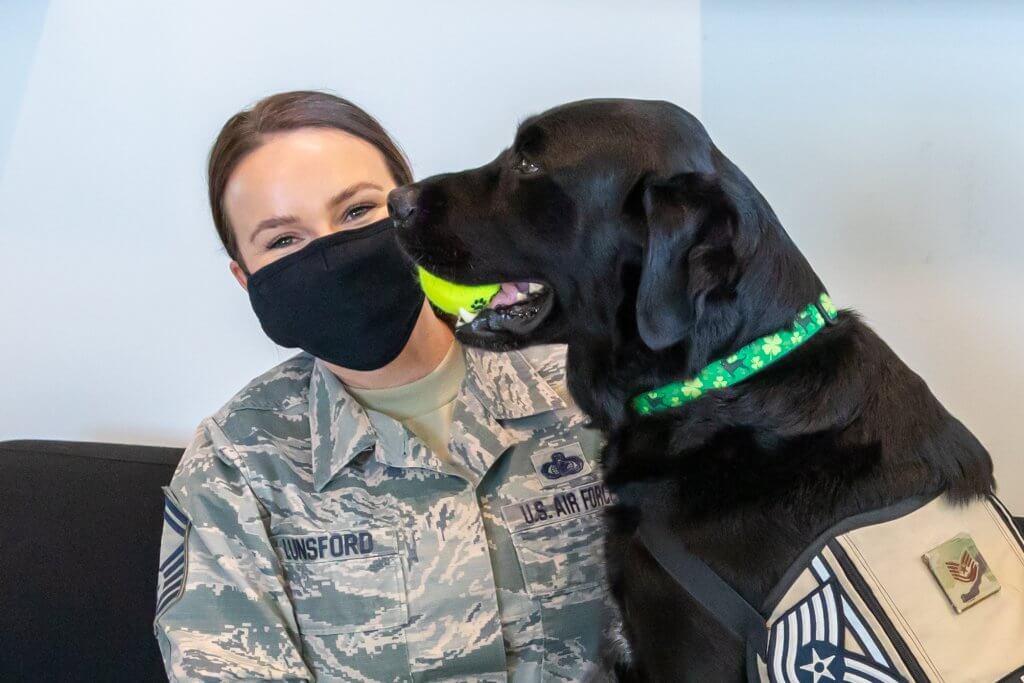
Cleo made his way to the center in 2018 when Teresa Fitzpatrick, Associate Director of Intelligence Surveillance and Recon Operations, received permission from ANGRC leadership to pursue a facility dog. She learned about a program through America’s VetDogs — an organization that trains and places service dogs for those with physical disabilities; guide dogs for individuals who are blind or have low vision; service dogs to help mitigate the effects of post-traumatic stress disorder; and facility dogs as part of the rehabilitation process in military and VA hospitals, according to its website. After putting in an application, Fitzpatrick was matched 30 days later with Cleo, which she describes as “striking gold.”
It takes roughly two years of training to become a certified service dog. Cleo started basic obedience training when he was just eight weeks old, participating in a prison puppy program through America’s VetDogs, Fitzpatrick said. Volunteers also took him out on weekends in the general public so he could get acclimated with regular life scenarios.
In 2018, Cleo arrived at the ANG Readiness Center. When he initially started his work, it took some time for him to adapt to interacting with hundreds of people, Mahr says.
“He was a little overstimulated at first, and became exhausted at the end of the day. Then he learned how to pace himself and take his naps during the day, so he really adjusted very quickly. But he definitely was like ‘wow’ when he first came on board,” she said. “But now he owns the joint.”
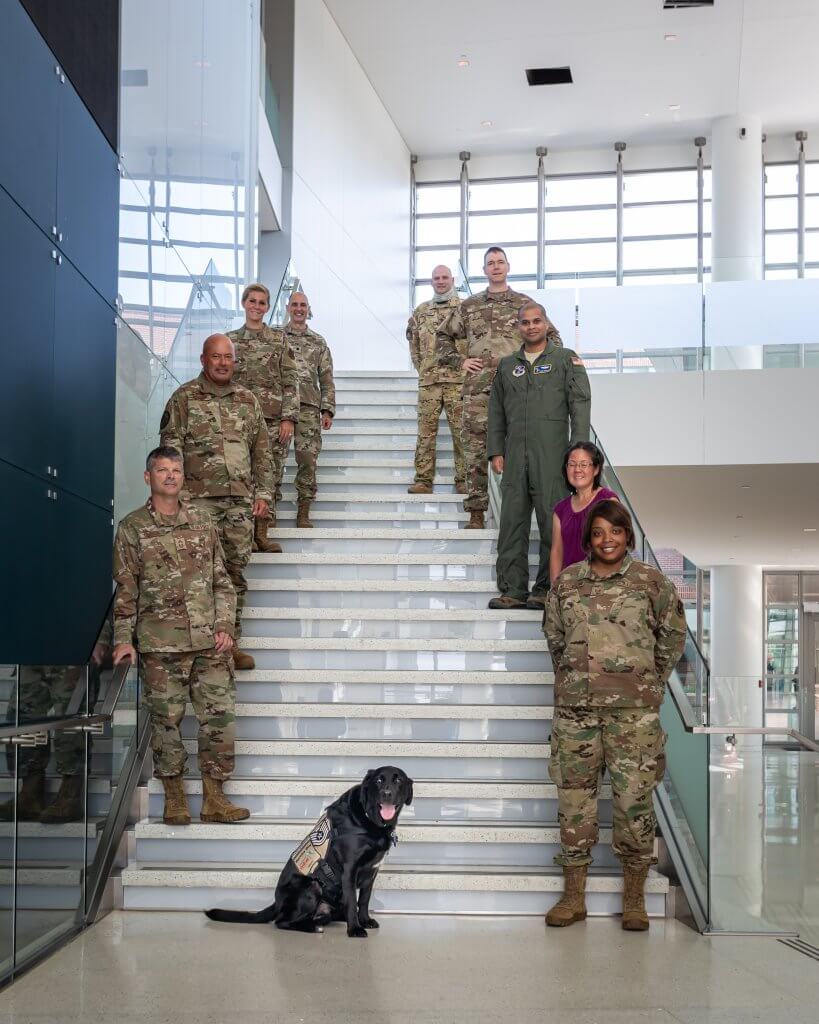
“He’s not exactly a boring dog, he’s very engaging. He’s like instant mister wiggles when he sees people,” Fitzpatrick added.
Cleo lives with Fitzpatrick so she is responsible for bringing him to the center so he can accompany Mahr for her work day. At the heart of what he does includes assisting Mahr on fostering relationships because humans tend to react in a relaxed manner when he is around. He also helps break down any reluctancies personnel may have when opening up.
A typical day for Cleo [prior to COVID] includes walk abouts, going to visit people in their offices, and attending retirement and promotion ceremonies. Whether it’s coaching appointments, counseling sessions or consultations with leadership, Cleo is among the initial sights people have when they meet with Mahr.
“Cleo goes wherever I go,” she said.
Fitzpatrick and Mahr are also mindful of those members who may be sensitive to interacting with a dog, though there have been instances where someone who isn’t a ‘dog person’ warms up to Cleo.
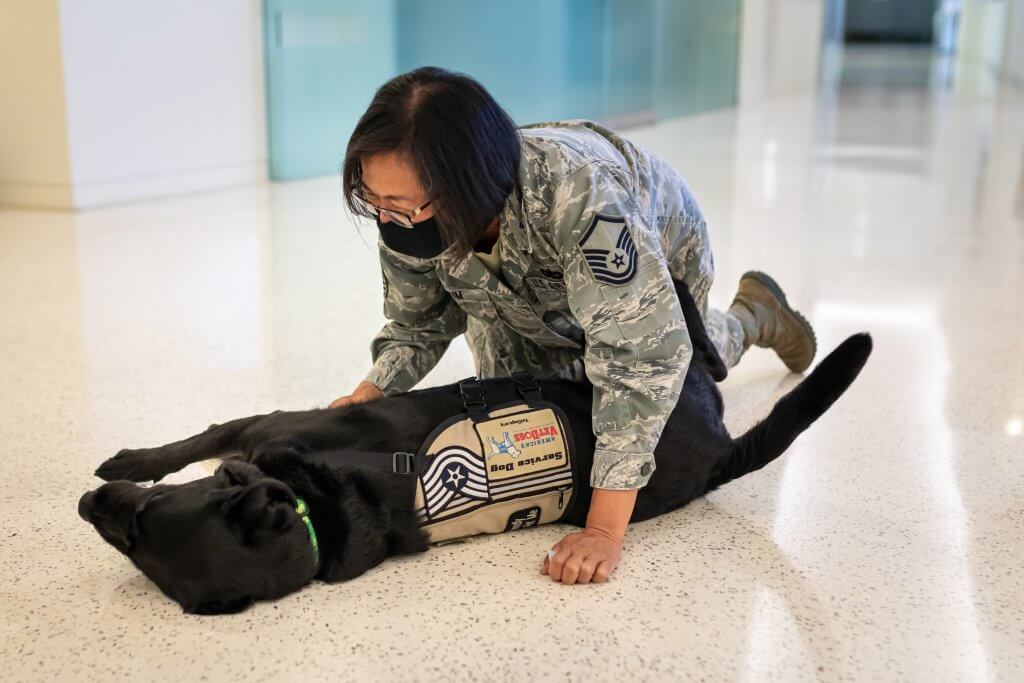
Cleo has also become somewhat of a dignitary around the center, receiving his own invites to special events like ugly sweater parties. And he can be seen playing outdoors on center grounds with his beloved red ball. But for all of his love of playing, he also brings a unique-to-him characteristic to the role he plays.
“What I professionally observe and experience with Cleo here is — the whole point of bringing Cleo on board is that he has the potential and opportunity to activate our human relaxation response and that very pleasant emotional state of well-being. He has those opportunities with his engagements with our members, and this ranges from instilling a sense of calm or comfort or warmth; or an excited or enthusiastic state of mind, cheerfulness,” Mahr said. “He’s a love machine so he can ignite that feeling of wellbeing in our members. I watch Cleo have a positive impact on our members’ morale and general heart state. He lifts their spirits and moods, and I see a shift in their mindset.”
Fitzpatrick describes Cleo as an innovative tool for helping others. He has developed a reputation for creating an environment of resiliency at the center by breaking down tough barriers of stigma that surround seeking any type of assistance. Both Fitzpatrick and Mahr agree he serves as a conduit for members to be more open to ask for help.




